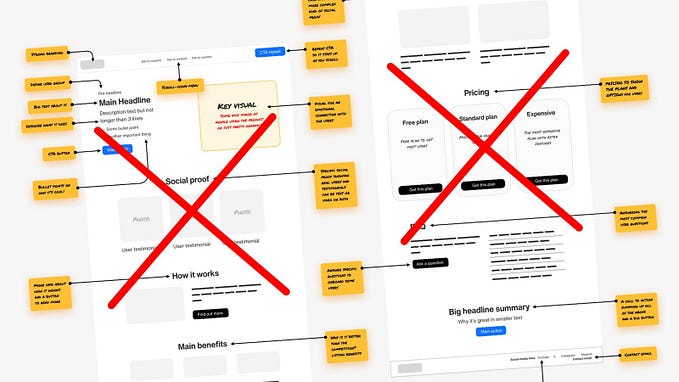Game design: dark patterns that keep you hooked
There might be another reason why you are so addicted to your game.

For someone who plays video games a lot, I realize how easy it is to get sucked into a game and play for hours at a time, but this can be a problem if you are playing a game INTENTIONALLY designed to be played for hours at a time.
More often than not, game designers are regarded as advocates for players, but sometimes their interests may not align with those of players’. These underhanded strategies are called dark patterns. Here’s a research paper that discusses dark game design patterns in detail.
Building upon the dark patterns in digital products, we take a long hard look at the dark patterns in game design.
Here are few deceptive design patterns that are employed into game design and how it manipulates players:
1. Temporal dark patterns:

When the users find themselves spending more time on the game than they intended to, it’s exhibiting temporal dark patterns. Game developers have come up with various ways to gets the users coming back to the game.
Let’s look at a few of those examples.
Playing by appointment:
Games with temporal dark patterns require users to play according to their schedule instead of the user’s own schedule/flexibility. It makes the users feel obligated to play on timings the game offers. If the user does not play in the provided window of time, they will miss out on it.
However, it wouldn’t be considered a dark pattern, if the user can carry on with the game without having to play at odd hours of the day. For instance, pokemon games let the user proceed ahead without compulsorily having to collect nocturnal pokemons at night.
Daily rewards:
The daily reward system pushes users to visit daily; else it punishes them for missing a day.
We’re all aware of the daily reward system where the user is rewarded with something for coming back each day to play. The rewards keep getting better with each coming day.
The dark pattern comes in when the user loses the reward for missing a day and has to start from scratch in the reward system. It makes the user come back each day even when they don’t want to.
In a way, Snapchat has a similar mechanism with its streaks. A streak gets started between you and your friend when you exchange snaps daily, but the streak breaks when there’s a gap of one day.
I have friends who have a snap streak of 1000+ days with people they’re not even friends with anymore. Yet, they visit Snapchat daily just for the sake of keeping the streak, even when they don’t wish to.
2. Monetary dark patterns:

In the classic Super Mario Bros era, we used to buy the game cassette and play endlessly. But in the coming years, with the introduction of in-app purchases, game developers have found various deception techniques to get users into paying more than they intend to.
Let’s look at a few examples.
Scarcity:
Scarcity is when people value things more when they are scarce and place a low value on things that are available in abundance. It’s considered a dark pattern since it induces a feeling of F.O.M.O and rushes them into buying something they usually wouldn’t have.
In video games, this dark pattern comes into play when a limited time on a feature is introduced, for instance, in a “tour”. The tour adds a sense of scarcity and places a higher value on things that don’t essentially have any. For instance, Mario Kart or Subway Surfers have expensive limited-edition tour-themed in-app purchases, which, in a real sense, don’t have a real value.
Pay to skip:
Pay to skip is a dark pattern that relies on the user spending money on skipping parts of the game they don’t have the patience for or don’t want to do.
For instance, this occurs when a user can’t proceed in the game until a timer representing real-world time is completed. This would include waiting hours/days until “energy/lives” is restored.
The waiting time gets longer and longer as the game progresses, upon which the player resorts to pay to skip.
3. Social dark patterns:

Games are made to be enjoyed with friends and family, but it’s not the same when game developers exploit this to gain more players for the game. The user feels that she must play primarily because of a sense of social obligation and not letting down their friends.
Let’s take a look.
Social pyramid schemes:
Typically, pyramid schemes work on making money by relying on the customers to bring in more customers.
In this case, game designers rely on getting more players by providing incentives to existing players to invite their friends. The game offers the user rewards/bonuses for bringing in new players, hence encouraging them to do so.
Some games allow certain features to be unlocked only when the user sends out invites on her social media friend list. It makes other people to be socially obligated to play even when they don’t wish to.
This brings us to the following dark pattern.
Social obligation:
When you’re pulled into the game because of a friend or playing a team game, there’s a chance of social obligation kicking in. The user may start playing out of the social pressure and the obligation of not letting down their friends.
The most prominent example of a social pyramid scheme and social obligation would be Farmville. We all remember that one, don’t we?
Here’s an in-depth analysis of Farmville. This game is solely based on social obligation, playing by appointment, routine and responsibility. The article observes that the game doesn’t have extraordinary gameplay or aesthetics to have people coming back to it. Its massive popularity is owed to social obligation dark pattern. People play Farmville because people are playing Farmville. The game requires you to persuade people to join in to be neighbours, without which it’s almost impossible to progress without spending real money.
4. Psychological dark patterns:

These dark patterns are carefully crafted strategies with a solid understanding of human psychology. It’s used to get a user to come back to play every day, even when the game is no longer fun.
Here are some examples.
Endowed value:
This dark pattern works on the basic psychology of a human’s reluctance to abandon anything in which they’ve invested a lot.
When a user has invested a certain amount of money and time into the game, it isn’t easy to throw it away. Unfortunately, some games also require spending hours/money on customisation, making its perceived value higher than it is.
The more a user invests, the higher the value of a game.
A part of loss aversion bias too comes into play in the endowed value dark pattern. A user would fear the loss of already gained achievements and skills, than welcome new ones.
Endowed progress:
The dark pattern is based on the endowed progress effect and Zeigarnik effect, where users remember incomplete tasks better than completed tasks.
It makes it more difficult for the user to abandon the game in the middle when there’s a list of arbitrary goals to complete. Moreover, rewarding badges for completing specific tasks (especially when there are hundreds of tasks) gives a sense of accomplishment. It makes the user come back to achieve more, do the grinding, or paying to skip or spending more time than intended.

Well, of course, when this list is complete, there would be a new list of tasks to tick off.
Closing thoughts

The goal is to make more informed decisions about how you spend your time, not get sucked into the vortex of games' dark patterns, and promoting manipulation literacy to be aware of such deceptive techniques.
Dark patterns are used in many facets of life, and video games are no exception. It’s up to you to decide if you’re going to use them for good or for not-so-good intentions. It always depends on the use and the context.
Read more about this in detail here!
The Canvs Editorial team comprises of: Editorial Writer and Researcher- Paridhi Agrawal, the Editor’s Desk- Aalhad Joshi and Debprotim Roy, and Content Operations- Abin Rajan
Follow Canvs on Instagram and LinkedIn. Don’t forget to follow us here on Medium as well for more design-related content.








